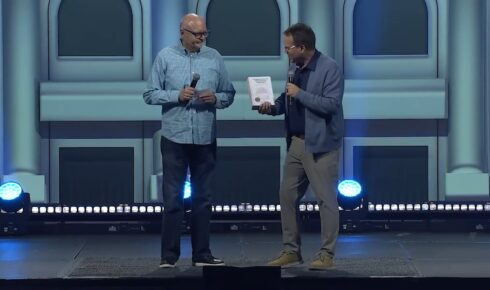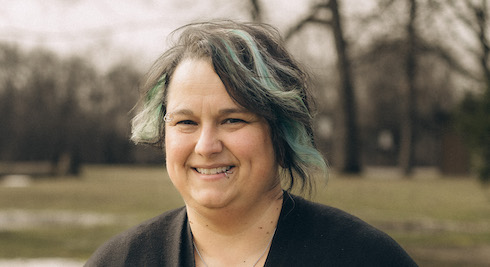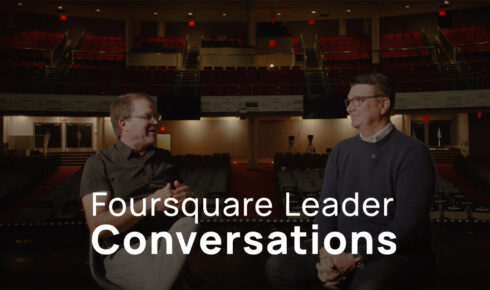After developing a disaster relief initiative in the aftermath of Hurricane Katrina that branched into domestic and international arms, two Foursquare entities—Foursquare Relief and Compassion and the disaster relief arm of Foursquare Chaplains International—recently merged to form the all-new Foursquare Disaster Relief.
Serving as co-directors are Foursquare Missions International (FMI) Associate Director Ted Vail and Foursquare Chaplains International Director Jay Donnelly. Ted will direct responses to international disasters, while Jay will take the lead as needs arise in the U.S.
“The two groups had great strengths on their own, but each of us had some things the other didn’t,” says Chad Isenhart, FMI GO Teams coordinator and international operations chief for the newly formed Foursquare Disaster Relief. “We also realized that we had both been showing up at disasters in response to calls from Foursquare churches. We said, ‘Why don’t we stop duplicating efforts and re-creating the wheel?’ “
Officials foresee smoother responses, pointing to Foursquare’s initiative after tornadoes struck Moore, Okla., in May. It only took one day for the first responder to reach the site, compared to five days after tornadoes near Huntsville, Ala., in spring 2011.
“We absolutely saw more synergy in Oklahoma,” Chad asserts. “We located the pastor of the church that could act as the disaster relief ministry, and chaplains as first responders. I came in and helped their response.”
In the past, both groups spent a lot of time in preliminary discussions trying to arrange housing, work crews and other logistics, Jay says.
“Now we have clearer-running lanes, and our communications with districts are more timely,” says Jay, who also serves as senior pastor of New Life Christian Center (Jackson Foursquare Church) in Sutter Creek, Calif. “We can organize food and products, and mobilize volunteers faster. Moore was our most efficient operation yet.”
The May response preceded the final merger by a few weeks, but the two groups had already started working more closely together after preliminary discussions in January. This cohesiveness spells a significant difference as Foursquare Disaster Relief operations attain a higher national profile.
Thanks to Foursquare Chaplains International, which has trained approximately 1,200 chaplains and other volunteers in disaster response, the denomination is now part of National Voluntary Organizations Active in Disaster (VOAD). VOAD units exist at the state and national levels, with officials in each summoning various groups after emergencies.
“We were requested to respond in Arizona,” Jay says of the forest fires that on June 30 claimed the lives of 19 firefighters. “In Oklahoma, we were asked to go to evacuation shelters and certain areas to care for people.”
The Oklahoma response included three teams totaling 28 responders, plus seven Disaster GO Teams. The latter helped with such tasks as clearing debris, painting buildings and installing drywall.
Their efforts symbolize a growing disaster relief effort. In 2012 Foursquare agencies and volunteers responded to 16 global and domestic disasters, and invested more than $1 million in relief. That includes just over $437,000 on global disaster relief, $56,000 in the U.S., and $145,000 of in-kind contributions from partner organizations, which is the equivalent of roughly 1 million meals.
In addition, continuing relief efforts in Japan after its 2011 earthquake and tsunami totaled about $240,000. Relief for Haiti after its 7.0 magnitude earthquake three years ago came to $138,000 for 2012 (boosting the overall Haiti giving to $1.3 million).
While hoping to see more volunteers respond to future international disasters, Jay says they hope to also train more indigenous personnel overseas who can respond to disasters in their own regions.
“With more people training to do U.S. responses, we will have more people who can respond to international disasters if requested,” Jay explains. “However, they would also have to take a missions course to respond outside the U.S.”
New Beginning
Mike Mercer, an ordained Foursquare minister who helped direct the Katrina initiative while on staff at Beaverton Foursquare Church in Oregon, has the sense that disaster relief has reached what he and others originally envisioned. Yet, he says it is also like a new beginning.
“The competency side of the equation got exponentially better,” says Mike, president of the anti-human trafficking ministry Compassion First, and a member of the Foursquare Disaster Relief executive team. “It’s like two hands coming together.”
While Mike expects the merger to produce a more efficient operation in the days ahead, he says Foursquare Disaster Relief faces challenges, too. The most daunting he sees is finding funds to help in cases of disasters that don’t attract that much media attention. Unless the disaster is widespread, the needs last long past the end of the news cycle, Mike notes. Still, he says those who respond will find rewards far greater than they imagined.
“It’s rewarding enough to help anybody, but the thing about Foursquare is, we’re family,” Mike says. “With Foursquare, there’s always a couch to crash on. When we can come in and help as family, then we can reach out and help beyond family. This local-church based response is uniquely Foursquare.”
Early Response Efforts
Disaster relief, in fact, goes back to the earliest days of Foursquare. The movement’s founder, Aimee Semple McPherson, spearheaded scores of disaster response efforts during the course of her ministry following the opening of Angelus Temple in 1923.
After the massive hurricane that hit Miami in 1926, for example, Foursquare raised $1,000 (which would equate to more than $13,000 today). Food and clothing was provided for hundreds of people after massive flooding caused by the historic St. Francis Dam break in 1928. And following a Southern California earthquake in 1933, more than $3,000 was raised in less than a week—that’s more than $58,000 adjusted for inflation—even though the Great Depression was in full swing.
In a July 1928 article, Sister Aimee emphasized Foursquare’s commitment to disaster relief: “People say: ‘Well, I don’t know what they preach at Angelus Temple, but certainly where they do such splendid work for the poor and afflicted, they must preach a good gospel.’
“This is a bit of good advice to Foursquare Lighthouses all over the world,” she continued. “Get a good, smooth working commissary department; take care of the needy of your city. You will make friends for the Foursquare Gospel, and eventually converts.”
Those interested in making a monetary donation to Foursquare Disaster Relief so that funds can be used for ongoing relief efforts can give online. For prayer requests, updates and photos of the Foursquare Disaster Relief team, see #foursquarerelief on Twitter as well as on Instagram.
By: Ken Walker, an award-winning freelance writer living in Huntington, W.Va.


